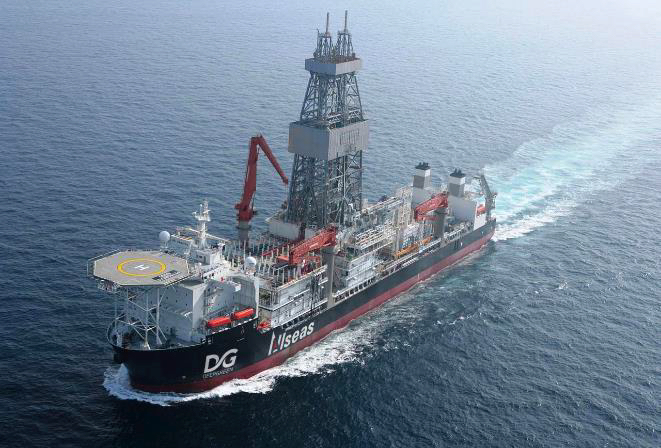Allseas has acquired the former ultra-deepwater drill ship Vitoria 10000 for conversion to a polymetallic nodule collection vessel. Together with DeepGreen Metals, Allseas is developing a deepsea mineral collection system. ‘We will develop all the technology needed to get the nodules on board ourselves,’ says Jeroen Hagelstein, PR Manager at Allseas.
The collection system is to responsibly recover polymetallic nodules from the ocean floor and transfer them to the surface for transportation to shore. The nodules contain high grades of nickel, manganese, copper and cobalt; key metals required for building electric vehicle batteries and renewable energy technologies.
‘Our job in the partnership is to collect the nodules from the ocean floor, to bring them to the surface with a riser system, collect them on board and transfer them to a bulk carrier at sea,’ says Hagelstein. ‘We are now working hard to develop the system we need. This will include some type of vehicle that will for instance vacuum or pick up the nodules. We are still in the process of deciding which technology to use.’
This is also true for the 4.5-kilometre riser system. ‘Bringing up nodules over such a distance definitely has its challenges,’ admits Hagelstein.
After the nodules have been collected and taken to shore, they will be processed using a metallurgical flowsheet developed by DeepGreen.
In house design
Allseas will develop the new technology in-house and when asked, Hagelstein states the company will not work with an external supplier (SWZ|Maritime recently talked to Royal IHC for example about their in-house developed deepsea mining solution). ‘We have experience working at depth and engineering is what we do,’ explains Hagelstein.
Conversion
Initially, the company considered converting one of its existing ships for deepsea mining, but then the option of buying the drill ship Vitoria 10000 came along. ‘The characteristics of this ship were very interesting to us. The fact that it is a DP (dynamic positioning) ship is a huge advantage. In addition, its size allows for much deck space to install the equipment needed. Moreover, the drill tower can be used for the riser system. The vessel also has a moonpool, which could be used to launch and retrieve the collector,’ says Hagelstein.
The Vitoria 10000 is 228 metres long, 42 metres wide, and can accommodate 200 people. Since so much is still unknown about what the riser system and nodule collector will look like, it is still too early to specify what the conversion of the ship will entail precisely. The ship is currently on its way to Tenerife, where its ownership will be transferred and the ship will be brought under the Maltese flag (all of Allseas’ fleet flies this flag). A yard for the conversion has also not been selected yet.
The company does expect the vessel to be operational for pilot nodule collection tests in the Pacific Ocean by mid 2021.
Creative technical solutions
DeepGreen is currently undertaking an integrated ocean surface-to-seabed research programme to understand the impact of collecting nodules from the ocean floor. In addition to generating new scientific knowledge of the Pacific Ocean, insights generated from this research will enable Allseas to design technology solutions that minimise environmental impact of nodule collection operations.
‘The green transition is going to require hundreds of millions of tonnes of nickel, copper and cobalt, and our research shows that ocean polymetallic nodules could provide society with these critical minerals at a fraction of the environmental and social impacts associated with land-based extraction,’ says DeepGreen Chairman and CEO Gerard Barron.
‘Allseas is excited to be involved in the exploration of the deep ocean for these important metals,’ adds Allseas Founder and President Edward Heerema. ‘Deepsea polymetallic nodule collection represents a new frontier and a new exciting chapter in Allseas’ history. With our offshore expertise and innovative capability, we can develop creative technical solutions for this new industry.’








